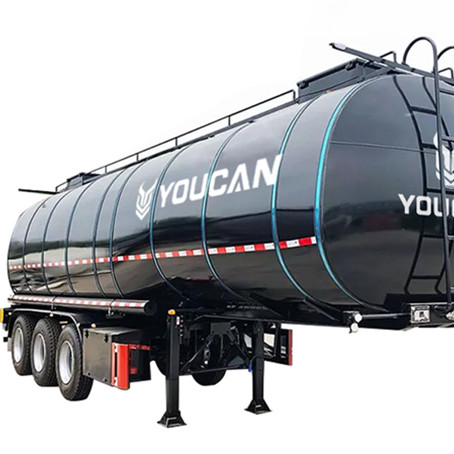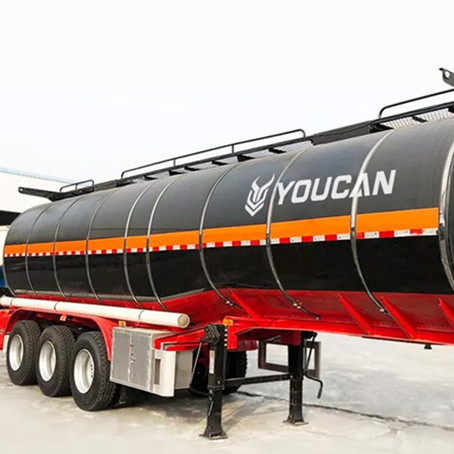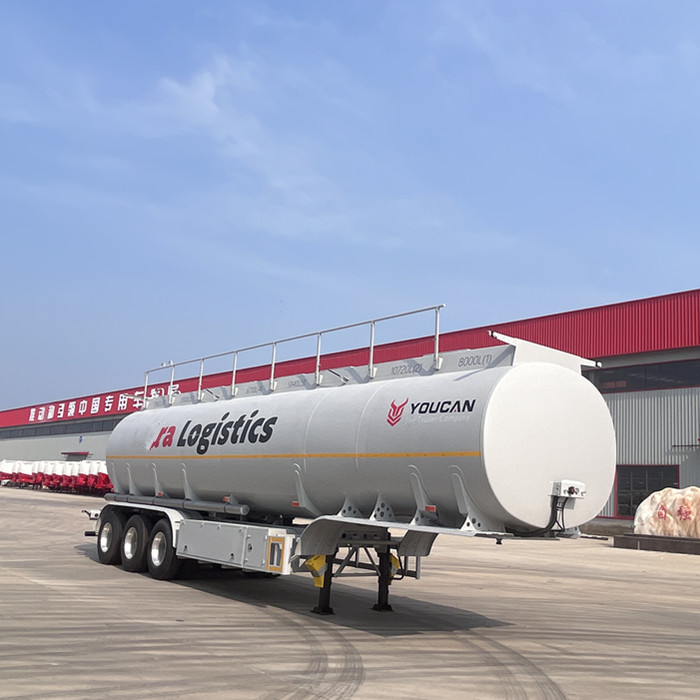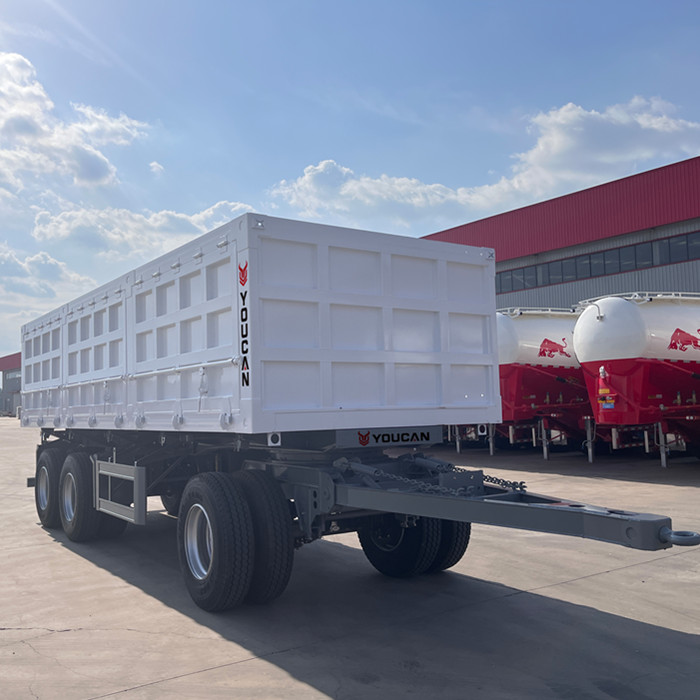The Asphalt Tanker Trailer Use and Buy Guide
An asphalt tanker trailer or asphalt tanker is a transport semi trailer. The large machine consists of several parts, including a trailer chassis, pumps, tanks, burners and heating systems. Rock wool is used for internal insulation and a stainless steel surface to cover the exterior of the asphalt tank. This makes asphalt tanker trailers durable and high quality.
Let's look at these asphalt tanker trailers in more detail.

Part1. What is an asphalt tanker trailer?
Asphalt tankers are used to transport liquid asphalt from one place to another. These trailers use diesel or gas burners to heat or sequester liquids during transport. In addition, asphalt tankers are used for penetrating asphalt pavement and asphalt surface treatment.
The tankers also serve as a surface paving and added surface treatment layer to the black gravel pavement mixed by the factory. Some trailers are designed to use the designed Angle of inclination to unload. The Angle is about 17 degrees, which helps the trailer unload itself at certain destinations. In addition, the heater constantly blows air, automatically heats and insulates the asphalt into place. These semi-trailers are ideal for bitumen transport.
When we look at an oil asphalt tank, the heat transfer is done using an organic heat carrier. The heating agent uses coal, oil, or a coal source to maintain the desired temperature inside the trailer. Asphalt tanker trailers are low pressure, safe, high temperature, and sanitary, thus keeping materials safe and untethered during transportation.
When transferring bitumen from the larger trailer to the smaller tank, the temperature can be controlled without overheating the entire tank. Large industries and factories use asphalt tanker trailers to transport large quantities of goods easily and quickly. When we look at asphalt tanker trailers, they have two to four axles and different body designs. The body design of asphalt truck trailers varies according to the steel requirements and required thickness.
The second part. What is the principle of asphalt tanker?
Asphalt tanks are primarily used to heat asphalt so that it remains usable when it reaches its destination. The thermal cycle inside the tank uses a hot oil pump to maintain a different asphalt temperature set. The temperature inside the tank must be maintained to keep the properties and properties of the asphalt intact.
Another thing to watch out for is the heating time. If the heating time is too long, the temperature is too high, the quality of asphalt will be greatly reduced. This will affect the performance and performance of asphalt, directly affect the purpose and quality of the project. Above 180, the asphalt starts to break down.
The breakdown of asphaltene to free carbon affects the use of bitumen in any particular project. Asphalt is viscous and malleable, but once the proportion of free carbon increases, it is greatly destroyed by the precipitation of carbide. Thus, the performance and performance of asphalt are reduced.
Part3. How to operate asphalt tanker?
Operating an asphalt tanker is not an easy task. Drivers are well trained and experienced before transporting liquid asphalt over long distances. The safe operation of dockers and tanker drivers is very important. Keeping in mind the high temperatures of asphalt and the dangers of driving in different climates is a challenge.
Asphalt tanks must be properly inspected before they are loaded. The tank should be cleared of debris and other contaminants. If there is moisture in the tank, the asphalt mixed in will foam. This foam, once formed, may allow harmful gases to leave the tank and affect the operator.

Parts 4. How to load and unload asphalt?
loading
There are a few things every operator needs to keep in mind when loading asphalt in a trailer tank. These are:
1. Ensure that the chair cover is in the correct position on the rotary drive to avoid winding.
2. The burning source is in a well-lit place, and should not be near the open manhole or overflow port. This ensures that there is no fire hazard.
3. The distribution motor is on before the value is turned on.
4. Before opening the storage tank, the loading hose must be attached properly and the drain valve must be closed.
5. Make sure no one is standing near where the valve may open. It's an extra security measure.
6. Once everything is ready, open the valve on the tank and pump in the desired amount of asphalt at a slow rate. The ratio should be appropriate, neither too high nor too low.

 WhatsApp
WhatsApp
 sales@youcantrailer.com
sales@youcantrailer.com
 +8615203709888
+8615203709888


